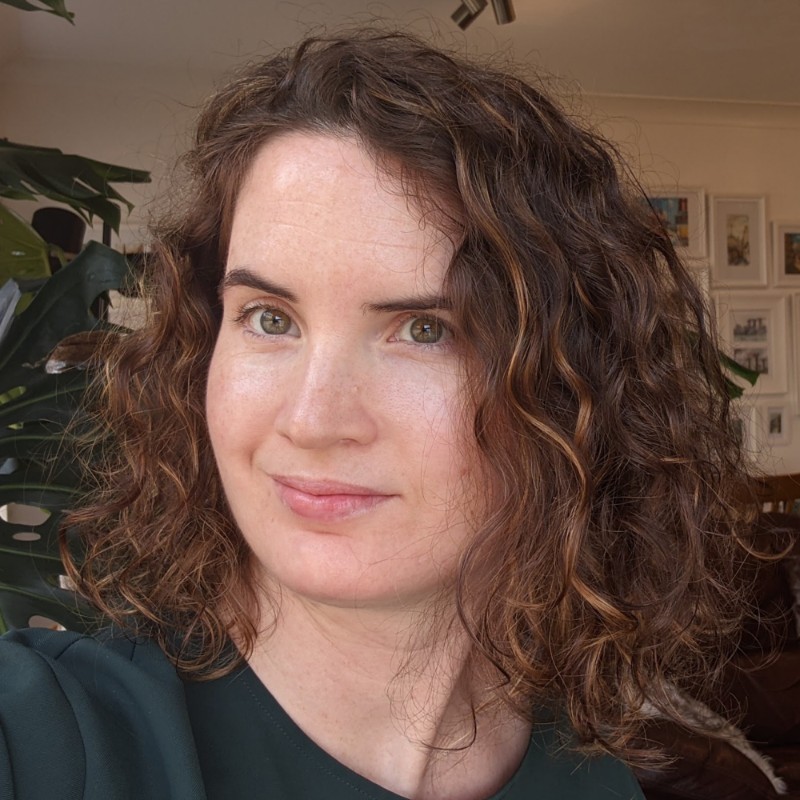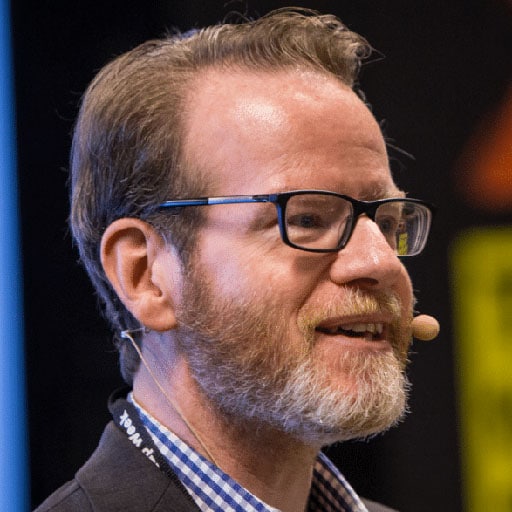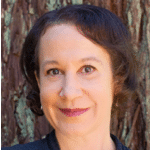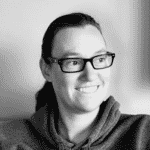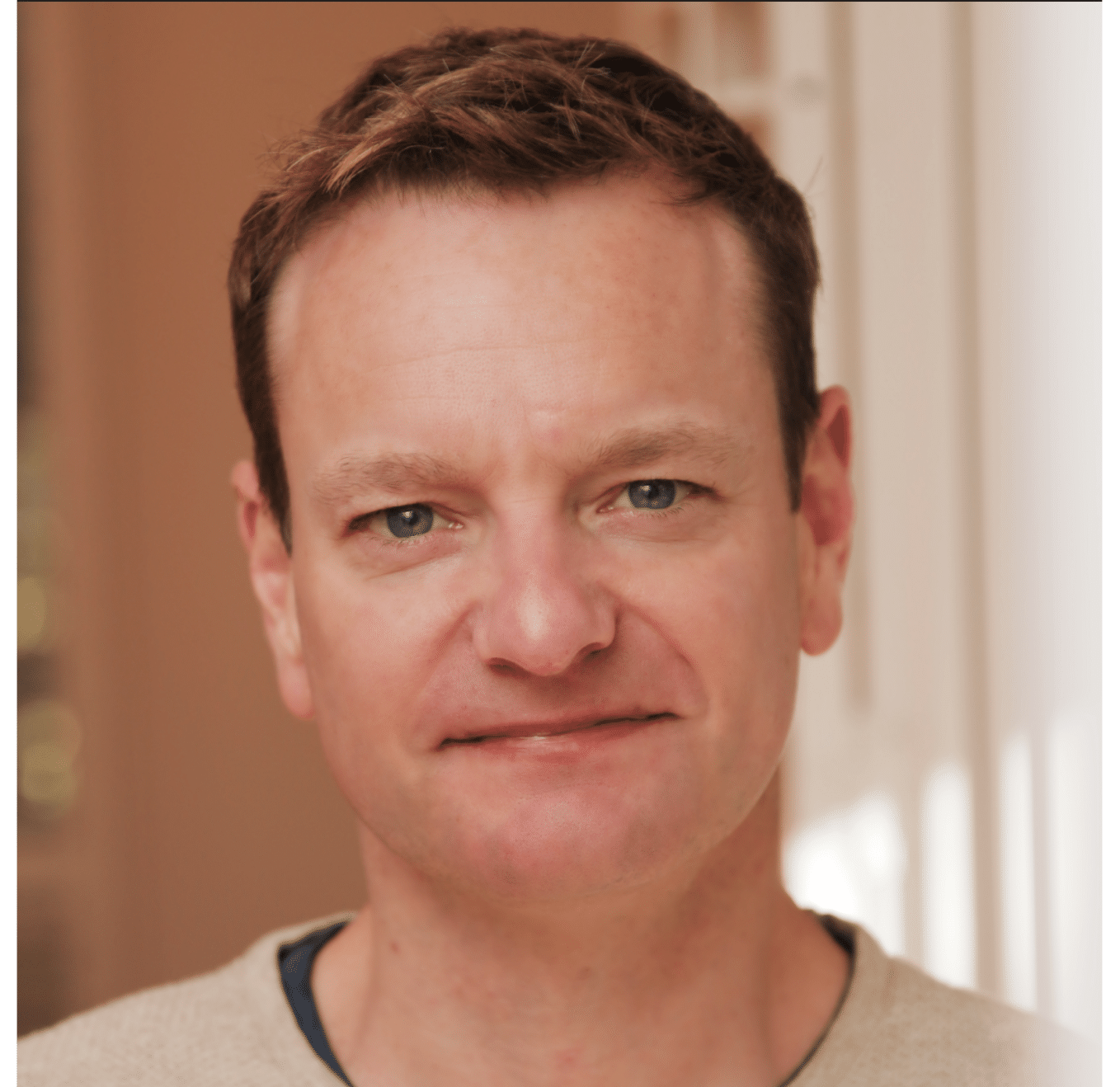Product Management Webinar: Value Stacking
Prioritization Principles: How to Value Stack with Krishna Panicker
In this webinar, we explore Value Stacking and how it can help you to decide what opportunities to focus on next to achieve your overall goal. You’ll be joined by our guest, Krishna Panicker, VP of Product at Airbase, and host Janna Bastow, CEO of ProdPad and inventor of the Now/Next/Later roadmap.

About Krishna Panicker
What do I focus on next to drive growth? Krishna is the VP of Product at Airbase and has a passion for building consumer-grade experiences and a curiosity for what drives demand. Formerly he worked at Microsoft, Skype, Pipedrive and Blink.
His main areas of expertise include user-centered design, agile project management, and mobile applications. On top of his academic and professional endeavors, he is also an avid volunteer; for the past two years, he has been an Organiser for a Product Strategy meetup. His expertise and extensive experience in Product make him a compelling and inspiring world-class speaker. So far, Krishna’s speaking engagements have inspired countless managers and entrepreneurs to improve their performance.
Key Takeaways
- How to prioritize problems instead of ideas
- Evaluating your product portfolio allocation
- The concept of value stacking and its advantages
- How this translates into practical day-to-day decisions
- Why value stacking is a strong tool in your prioritization kit
[00:00:00] Janna Bastow: Welcome to the, Product Expert Fireside, that we’re running here today, glad to have you here. It’s a series of webinars that we run. we’ve had a bunch of these over the last couple of years. The talks are always recorded, and it was a mixture of either presentations, or firesides, or a mixture of as we always have amazing guests, experts, who join us, and it’s ways with this focus on the content, on learning, on sharing, on hearing from their experiences that they bring from their lives as product people.
So today is going to be recorded and shared and you will have a chance to ask questions, by all means, jump in there with your q&a, with your questions and we will definitely try to get a chance to answer all those and I will jump in and give you an intro to Krishna Panicker, our guest in just a moment. But I did want to just introduce, ProdPad, tell a little bit about. A little bit about that before we get started. this is originally a tool that was built by myself and my co-founder Simon, when we were both born managers We basically just needed tools to do our own jobs that didn’t exist. We needed something to keep track of experiments were running, We needed something to help us hit the business objectives that we were given and help solve customer problems, and just keep tabs on ideas and feedback that made up our backlog. And so building ProdPad gave us control, and organization, and transparency. And so it wasn’t long after we built it that we shared it with the product people around us. And today it’s being used by 1000s of teams around the world. So thank you to all of you ProdPad users out there. it’s free to try so please jump in there and give it a try. We even have a sandbox mode, where you have example, product data. You have things like lean roadmaps and OKRs experiments and feedback and can see how everything fits together, in a product management space. And our team is made up of product people, not just founders, but throughout the team. know, start a trial. Try it out. We’d love to hear your feedback. We’d love to hear how you get You know, let us know, what works and, we’d love to hear from product people like ourselves.
So on that note, let me jump in and introduce our guests. This is Krishna Panicker. Now, how I know Krishna, we actually met up earlier this year, it was at a CPO, Happy Hour, hosted by Bruce McCarthy, who was our guest here, I think was in January we had Bruce McCarthy on and, we had a couple of drinks, Krishna and I are. We were hanging out at this, this happy hour and I realized that Krishna is way of talking about product management, particularly this concept of value stacking was really interesting. And he’s also got this wealth of knowledge and experience from his years as a product person. So he’s currently the VP of product at Airbase and he’s previously been product at Microsoft, Skype, Pipedrive and Blink.
So I’m really excited to hear, to hear from Krishna today. I’m really excited to have you here Krishna, thank you so much for joining us. Everyone in the chat. Please give Krishna a warm
[00:02:51] Krishna Panicke…: I’m even more excited to be a guest [laughs] on your show.
[00:02:56] Janna Bastow: Excellent. thanks so much for, for joining us here today. So again, thanks so much for joining us and, you know bringing up this topic of value stacking, which is what we were … we got to when we were chatting at the, the bar earlier this year. So, I what is value stacking? Because it’s a new concept to me, and, I think is gonna be new concept to a lot of people here.
[00:03:18] Krishna Panicke…: Yeah, so let me just maybe step back as to why, I put this together. So I was really struggling, myself as a PM, I’d be having a very constructive discussions and arguments about how we prioritize and , I had this unstructured concept in my head, and I found it hard to articulate, right. So what I, would do is I’d give this 10 minutes of context setting, every time and it was just taking too long, every time to get everyone the same context. And so find a way of summarizing that and just, it helps sometimes giving something a name just helps people to get context very quickly.
Yeah. And if I may, I’ll share think we, I shared this story earlier. knew it was kind of working when, experimented with the terminology and I’ll go into what it is but you know, it’s kind of like, I was thinking of like domino effect or domino cascade and value cascade and then value stacking as a term just stuck, is was gonna not call it AV testing but I was just experiment with the term. And then I knew it worked when one of my, previous colleagues, she said to me, be very proud of him Krish, I- I barely stack the shit out of my roadmap. And, and then I thought, Okay, seems to be resonating with people. let me just explain. Let me now dive into what might be and I just think some visuals might help here, So if I may, I will just.
[00:04:34] Janna Bastow: Yeah, of course.
[00:04:34] Krishna Panicke…: Screen share.
Let’s have a look. Okay, so start here, if you can see my screen. And so I’ll start with, firstly, this idea of growth. And one thing, kind of one insight that I had, working in a [inaudible 00:10:00] organization we talked about growth, but I kind of really saw there being two types of growth, right. And so there’s, there’s what I call, fast growth. Which is typically been quite additive. And it’s the ability to derive growth relatively quickly. It often looks linear.
And there’s another type of growth, which I think of as high growth, right? this is where you can potentially, idea is you can actually compound a set of opportunities together, so you, you expect a lot more growth. And it’s not like one is better the other by the way. I mean, I think that that crossover point, arguably as you know, somewhere around the lines of, product market fit. And if you’ve got a short runway, you really want to go fast, you want fast growth, but actually if you have a, an extended runway, then you might want to think about high growth.
And so as I explored this idea of high growth, I started thinking about, about this. And this is really my very dumbed down way of explaining this, right. Imagine you have a set of opportunities and I’ll give each one a value but these are gonna be valued any way you want, lets say But I’ve just given it these numbers in here, six, five and four, six is worth more than five, five is worth more than four. And if you work on this set of opportunities. it’s worth a certain amount, right? So here, this up to 15. And, what if you take another set of opportunities that are similar, but maybe worth a little less? Right? take a five, I take a four, I take a three and then I give you a secondary value. Now we’re working in product, we know nothing is ever as simple as this. That’d be great, right? But let us … just bear with me for a moment.
But this is the struggle that I had in my conversations because anyone in their right mind would choose the top set of opportunities, right? You would choose the sixth over the five or the five and the four or the four over three as you should. Right? because as a set the 15 is higher than the 12.
And my premise is what if you could work on a set of opportunities that when compounded, right? give a different result. So what if instead of looking at this as multiple, you know, as additives, we look at these as multiplies, all right? And that changes things entirely. Because now we get something that looks like this. Right? And now by seemingly working on things that have less value in isolation, in fact, can compound to be worth something much more. Right? And so that’s the, let’s say, the abstract, version of value stacking. And maybe if I just double click into this a bit more, to flesh out an example. And then maybe we can pause.
The example I give in, it’s almost an unfair example, but I choose it just because it’s easy, it’s one that everyone kind of knows, Apple. Go down it All examples in the … half of them seem to end with Apple but, they’re worth a few trillion. So the, you know, I had earliest, iPhone, so I used to, you know, I at least, didn’t care, like in the early days of, you know, the smartphone. When we used to even call it smartphone. You know, remember those terms? Smart phone, feature phone. So I used to read up the release notes and it was really interesting. I remember in 2012 I think it was they released this feature on the phone called passbook and you could add, probably most people don’t even remember this right, because literally 10 years ago, but you could add like cinema You could add event tickets, and add them to your app. Right? So you can actually have them standard show about [inaudible 00:14:18].
That was 2012 and honestly, no one even thought about this. They didn’t talk about it. They made mention of it. And I did find it peculiar, I just found like why would they be releasing this like there’s surely, there’s other things I could work on [inaudible 00:14:33]. And then subsequently, in 2013, they then released Touch ID right? So you could seamlessly, open your phone, no, no code, passcode you can just touch, touch your screen, and now even look at the screen. And it knows who you are. That was the year later, and it was in 2014 I would say, that the pieces started to fall into place. Because that’s when they released Apple Pay. Right? So let’s just, let’s play that back. So they released, what, they released these three in sequence. Right? And I mean, could you even imagine Apple Pay without some of these elements? So let’s look at these elements, because what happened was they were building card habits for two years. Right? and they just change the type card. You put it in. Guess what, two years later that so my thesis is they plan this all along, right? It turns out passbook got its app name change to to what? To Wallet, it’s the same app, they just changed the types of cards you put in. Right? So and not just… not just put your boarding pass, cinema tickets and you like it’s … now you’ve got your credit card, and your debit card. So they spent two years building a card habit. And it kind of makes sense because … because then a year later, they then start thinking you know what we need to build an [inaudible 00:16:12]
Right, because now this isn’t actually just about getting into your phone quickly. It’s about authenticating who you are. And can you imagine releasing Apple Pay without a wallet, and an ability to authenticate who you are? No, I don’t think I could, the difference is, they actually unbundled it in an interesting way. And each of these add value in isolation, and yet was able compound on each other, such that now they solidly build a pay habit.
Right and that’s a very simplistic example here, that this value, this is close to zero, I would argue versus the other things they released. This had a relatively high value, but they sequenced this in a very interesting way to multiply value, And to end it here on a couple of things, one is, you know, to quote Steve Jobs. Do you know, you can’t connect the dots looking forward. You can only connect them looking backwards. And I think this is a key part for value stacking to me is what do you value stacking towards? You need to know that and so for me, those dots are problems. And so part of this, is really understanding what’s the problem behind the problem. But I’m going to pause there.
[00:11:46] Janna Bastow: Yeah, it’s a really good example. Because I, you know, when you first outline that you’ve got the different, the numbers at the top there, you know, there’s a lot of … that’s how a lot of product managers often think about things. You’ve got a bunch of ideas or a bunch of potential things that you could go solve and you
[00:12:01] Krishna Panicke…: Yeah.
[00:12:01] Janna Bastow: Add them up and go, “Oh, we’ve got, you know, this opportunity” We’ll go work on the ones that have …
[00:12:04] Krishna Panicke…: Yeah, just chose … chose the biggest number right?
[00:12:06] Janna Bastow: work on the ones that have the biggest, you know, have the biggest price score or whatever. But in reality when you actually start stacking them up that way, you start realizing that they only make sense if you can sequence them towards something that gets you that, that, that bigger climb. That bigger problem that it’s gonna solve down the line.
[00:12:25] Krishna Panicke…: Yeah, and don’t get me wrong, like there are certain instances where you know what, you need that fast growth. And you have three month runway, a customer wants X build X, because it buys you more runway.
But after you get certain … so if you work at a startup, sure, there’s, you might need to think about things differently, but post that you might want to think about, really start thinking about this as not just a single opportunity, but a set of opportunities.
And thinking about how you value stack.
[00:12:52] Janna Bastow: Yeah. Now I’d actually disagree with, Steve Jobs point about you’re not able to connect the dots, Until you know, the, in the future, you can only connect them, in the past sort of thing.
Because I mean, arguably, I mean, then that’s what Apple did. They drew the dots and then the line was connected later, right? That’s essentially what we’re doing when we’re creating a strategy. They just created one that’s very compelling but not very obvious to people as they were, doing it. Right?
[00:13:18] Krishna Panicke…: Yeah, th- their strategy, I think was really hidden in plain sight. And and I think we’re saying the same thing, except that what I think, they and I think PMs do well is they have the ability, sometimes to teleport into the future. To imagine what that future looks like.
And then to unpack it into the present.
[00:13:37] Janna Bastow: Yeah, and that’s actually a skill in itself. So I remember reading something at some point in time that, pointed out that humans have this aversion, this inability to empathize with their future selves. They have this inability to visualize themselves in the future, right? So if you try to sit and say, think about yourself at 80 years old, trying to empathize with the problems that you’re going to have. People just they don’t, they can’t do it, they freeze up. Whereas if you try to empathize with somebody who’s a stranger to you, but, right there, you can do it because you can visualize them.
[00:14:10] Krishna Panicke…: Yeah.
[00:14:10] Janna Bastow: You’ve got this frame of reference.
[00:14:11] Krishna Panicke…: It’s very tangible. It’s very real.
[00:14:13] Janna Bastow: Yeah, yeah. But we apparently as humans, we suck about thinking about the future, which is why I think so many of us are just terrible to our future selves. We’re like, Yeah, you know, exercise, who needs it? Right, suncream, who needs it? all these other sort of, decisions that we make, that aren’t necessarily, perhaps most empathetic decisions for our future.
[00:14:31] Krishna Panicke…: Yeah.
[00:14:32] Janna Bastow: Right? And so this is actually asking ourselves to think about what’s the future of our products? what, are the future sets that we need to really think about to get us here, right? It’s not just drawing a line saying, yeah, our happy line is this, but it’s really thinking about, what does that take? How do we visualize that and therefore what steps do we need to take to get there?
[00:14:52] Krishna Panicke…: Yeah, I like your idea of your future self. I think of it as trade offs, like what trade offs is the future self, in the present self making of itself, right? So you might be on a diet and you decide to, you know, as a one off, eat a cake and you’re making a trade off saying, You know what, “I am prepared to trade off this version of my future self with my current self”
[00:15:12] Janna Bastow: [laughs]
[00:15:12] Krishna Panicke…: And but you need to acknowledge that, you need to acknowledge that they’re both … Both these things, exist and You’re constantly shaping what that future self is.
[00:15:20] Janna Bastow: Right? Yeah. And I guess the, product version of that is, you know, I see that our product is, you know, we want to be here, but you know, we’re just gonna build this one feature this, for this one client. you know, That’s July written off. But that’s okay. Because we still got August and September and the rest of the month to do, you know, discovery work that’s gonna help us do this kind of work.
[00:15:40] Krishna Panicke…: Yeah.
[00:15:40] Janna Bastow: That’s fine. If you do just that one thing, but if you do that one thing every month you’ve sold off every month and not really thinking about, you know, what’s actually going to get you to do something really transformative to your product.
[00:15:52] Krishna Panicke…: Yeah.
[00:15:53] Janna Bastow: You’re never going to do that big swoop. Right?
[00:15:56] Krishna Panicke…: It’s interesting, because it doesn’t just make you think about what else you should do. But it sometimes makes you think about what you absolutely shouldn’t do. Or even remove, right so it really makes you think about what should be in scope.
[00:16:13] Janna Bastow: Yeah.
[00:16:13] Krishna Panicke…: And that’s, again, it’s not just adding things it’s making, taking things away and making sure there’s certain things you absolutely avoid, because it doesn’t, bode well for that future version of your product.
[00:16:23] Janna Bastow: And that’s a good point, like adding, taking away, multiplying, you know, and Jacob actually asked a good question in the chat. He said, “both plus and multiply, imply that the order doesn’t matter.”, you know, how important is, how important in your experience is it to stack in the right order?
[00:16:38] Krishna Panicke…: Yeah, so that’s a very good question, Jacob. obviously, you know, in some ways, all models are wrong, right? So I’d use that as a really … an analogy to explain things. But actually, I do find the sequencing, Again, there’s no right, right or wrong. But the question you need to ask yourself is what are you optimizing for? Right, because it might be that there are trade offs in terms of, how quickly you want something out there. And actually, I do think, I do think about the sequencing, because what if, you could do certain things … In the example I gave everything was the multiplier, but in some ways, but actually, some things are still additives. And so actually pulling some of the multipliers forward, you might think, okay, that’s an additive. I do need to do that.
But it’s going to be additive. It’s not going to compound and other things are multipliers, actually, can I … can I bring those multipliers forward? That’s one version of it. And, actually, are there certain that compound better than others? Right, and you need to determine you need to kind of play around with some of that sequencing to understand what the right trade off is, depending on what you’re optimizing for.
[00:17:46] Janna Bastow: Yeah, I guess it’s a little bit like if you’re building in, say, the B2B world, right? I’ve got some experience in this and what, you know, when you’re building in that you got to think about, you know, different types of requirements. Like some things you’ve got to do because they’re just basic requirements, like having security or meeting GDPR requirements or stuff like this, right? And these are just high like hygiene requirements, right? Sometimes something comes in, it’s like, look, all of a sudden you got this new requirement, you got it. Have this stuff to, you know, hit GDPR stuff. That’s like an additive thing, And you could do it ahead of time, or you could do it just on time. You don’t want to be behind the schedule, because it could get you in trouble, but it’s not going to multiply you right. It basically becomes table stakes. Or you could do this other thing, which actually, if you created this thing that added, you know, like a referral mechanism. And you brought that in earlier in your product that could get you from 10 to 100 customers and from 100 to 1000, and from 1000 to 10,000, earlier than if you waited until it was way too late, much later in the product. Like you can spend a long time just building like the basic building blocks of a great product but that doesn’t actually grow. There’s nothing in there that gets people to share it, or has it doesn’t have the so what yet, right? so there’s a lot that you can really think about going. You can do a lot of stuff but none of these things actually really have the “Mf” yet.
So this is … I think about … The order really makes you think about, which things are going to front load that, so we can take these bigger steps upwards.
[00:19:16] Krishna Panicke…: Absolutely. And also what leaf were you moving, when you talk about B2B [inaudible 00:26:10], turns our I need a B2B you know, you know, typically you’ve got the levers of retention, acquisition, attraction, you know.
[00:19:25] Janna Bastow: Okay.
[00:19:25] Krishna Panicke…: Increasing, LTV, lifetime value. So there are few levers that you have that there, and you might be pulling on one lever. So lets say for example, a classic, one to [inaudible 00:26:34] step I guess is is onboarding a, that’s a very simplistic example. I think that’s relatively generic in the sense that you get that. You get that right, because it’s early in the sequence. Everything ,else tends to get better.
[00:19:46] Janna Bastow: Yes.
[00:19:46] Krishna Panicke…: But … And everything else benefits from it. and so that might be more of a acquisition slash retention play. you could have a very simplistic, maybe less compounding value, far less, in fact, is maybe just, you know, you have a ton of support tickets, that is really sucking up energy and the velocity of the team. Right. And actually, you think, you know what, if I do this now the value I get is not so much the value to the customer, there’s still value to the customer, but it’s, I freed up this engineering time. I’ve now increased my engineering capacity by 20%. That’s a different form of strength, because now you’re extracting more capacity from the team. But why not do that earlier?
[00:20:26] Janna Bastow: Yeah. And that’s actually a really good point. I think that if she speaks to, Lucy asked a question. She said, you give an example of how value stacking could be applied, to choose one feature or a set of features over another?” And now you’re just saying, you know, you can apply it to things that, are further up the funnel like onboarding, acquisition stuff or things that are more costly?
[00:20:46] Krishna Panicke…: Yeah. So I think that’s the key thing is understand the outcome that you want, right. So the mapping I have here, very simplistic. I have is, we want to make some form of business impact. Right? Like I say, if think in SAAS terms, do we want to increase retention? Do we want to increase the number of customers we acquired? Do we want to increase the lifetime value from each of our customers, okay, which lever we’re trying to pull. Great. Now map the problems to that impact. And so that’s the customer outcomes, right? So now we’re connecting the customer outcome, with the business impact, and, and then focus on that set of problems.
[00:21:27] Janna Bastow: Right.
[00:21:27] Krishna Panicke…: So focusing on the opportunities in that mapped that … so know, knowing the lever, I think, you want to pull, will help better understand the set of opportunities you should focus on.
[00:21:38] Janna Bastow: Yeah, absolute. And this is what I liked so much about the value stacking, was how it how it worked so well with the now, next, later framework. You know, because it is really about, thinking about the sequence of events, or a sequence of steps that you need to take in order to reach the ultimate outcome. The vision of the product, You know, what needs to happen now? what needs to happen next? what needs happened later? And there could be multiple things that need to happen. and it really gets you thinking about that, that sequencing, but I think your way of framing it really gets you thinking about those multipliers or front loading the problems that should be solved up front, rather than just a list of stuff to do, which I think a lot of people tend to fall back on it, without that, that way. That, without being forced to think about it that way.
[00:22:21] Krishna Panicke…: Yeah, and I really, and personally, I have to say. And I didn’t understand why initially I was really struggling with all these methodologies, like RICE etcetera.
[00:22:28] Janna Bastow: Yeah.
[00:22:28] Krishna Panicke…: And I think, because I was trying, what are you working, you know, what are we working towards, right? and so yeah, it definitely helps me just, at least the way I think work toward something bigger. And it never gets away. Because all of these frameworks sound great. But if you don’t even know where you’re headed, if you don’t know your direction. It doesn’t matter what framework you’re in quite frankly.
[00:22:48] Janna Bastow: Yeah.
[00:22:49] Krishna Panicke…: Like that c- always comes first. doesn’t matter how fast you run if you’re running in the wrong direction, right?
[00:22:55] Janna Bastow: Yeah. Now, I’ve got a question here from Oliver. And he says, “How does value stacking, differ from optimal sequencing?”
[00:23:02] Krishna Panicke…: Optimal not familiar with optimal sequencing, and maybe it doesn’t differ in fact.
[00:23:05] Janna Bastow: Maybe it doesn’t. It sounds like …
[00:23:05] Krishna Panicke…: Maybe what it’s done is come up with, just less syllables? I don’t know.
[00:23:08] Janna Bastow: He’s just clarified. He said he made up that term, but he made it sound really, official by putting it in quotes.
[00:23:13] Krishna Panicke…: [laughing]
[00:23:13] Janna Bastow: So it sounded like it was another framework. And I’m like, I mean, yeah.
[00:23:16] Krishna Panicke…: Yeah.
[00:23:17] Janna Bastow: Yeah, it sounds like it’s a another good term for it. Yeah.
[00:23:21] Krishna Panicke…: Yeah, absolutely.
[00:23:23] Janna Bastow: I mean, have you seen other, terms or other frameworks that sort of sit alongside value stacking or other ways that, that segue with it?
[00:23:32] Krishna Panicke…: So, can tell you this. So I’m. what’s front of mind for me, I’m actually currently going through [inaudible 00:31:22] planning, with my team.
[00:23:38] Janna Bastow: Yeah.
[00:23:38] Krishna Panicke…: So a lot of planning, frameworks come to mind when I say this, and value stacking is one part of that. there are certain planning principles, that having shown here, that I’ve been using, Yeah, so one is around, in fact, let me … I think I’ve got a couple of slides on this. Maybe let’s have a look. Let’s see we’ve got. What have I got here. All right, here.
[00:24:01] Janna Bastow: And I love when we can go into the practical like, okay, so how does this actually play out, in things like your quarterly planning, like when is this …
[00:24:08] Krishna Panicke…: Yeah, yeah.
[00:24:09] Janna Bastow: What you do day to day?
[00:24:10] Krishna Panicke…: So, I would say this is not, it’s more a complimentary, framework that I’m thinking of, right. So this isn’t just value stacking itself, but more around planning. so one thing that I think that is like right now, before we even get into … Okay, we think to ourselves, okay, we want to, we want to work on something, and we instantly go into what we want to do. And the first question I tend to ask myself during planning because, you know, I managed quite a few teams here. So kind of, I want to look more broadly. Like what are, what types of investments are And the analogy I used here is maybe around investment portfolio allocation, right?
In some ways, we have that in product, right? We have pro- product allocation, [inaudible 00:33:00] planning allocation in product so, KTLO is my shorthand for keep the lights on by the way, and I’m not going to … Let’s not even going to bother getting into the definitions that we use, but you can have any categories that you want, whatever you want to call it, Right?
[00:25:07] Janna Bastow: Yeah
[00:25:07] Krishna Panicke…: So we’ve got KTLO, retention, strategic bets, tech debt, squad bets. We tend to have five, categories. And the first thing I asked myself is, hey, all up what is our allocation? Right? And so what do you think about as a matter of interest, Janna, when you look at this, what are your first thoughts. As someone who runs a business? What are you thinking when you see this?
With out even understanding the terms?
[00:25:30] Janna Bastow: I mean, I really like this because what this is showing me is that there’s strategic oversight into the, allocation of, the work that’s actually happening. Right. I think too often teams work on things because something has come up, like noise has happened in the backlog, or noise has happened from a customer or you know, whatever’s come up in, whatever sort of planning tool or wherever else, as opposed to taking the step back and saying, “Hey, actually, it’s our strategy that we’re going to spend 30% of our time focusing on tech debt.” like so many teams just don’t actually spend that time and allocate how much, like how important is it to them to pay down tech debt, and your team is saying it’s 30% important to pay down debt.
[00:26:12] Krishna Panicke…: Yeah, and, and I mean, in this example, what I’m thinking is, you know, we got keep the lights on. There’s a lot of effort just to keep the lights on.
And so that is not somewhere I want to be, right. I except it. don’t like it. So how do we get that path? Right?
[00:26:26] Janna Bastow: Yes.
[00:26:26] Krishna Panicke…: So even before we get into where we want to get to is, actually where do we want our allocations? Right?
[00:26:32] Janna Bastow: Yeah.
[00:26:32] Krishna Panicke…: From an investment portfolio perspective. you know, for example, and again, this is just completely made up quite frankly, but we might want to say, You know what, quarter on quarter we going to reduce, our KTLO, and maybe we want to, up our strategic bets.
We’re not there right now. and I’ll actually need some squads to make their own bets as well. And then eventually get to a healthy level where we have a steady state, median, KTLO retention right, so you can have investment [inaudible 00:35:13]
[00:26:56] Janna Bastow: I’ve got a similar set of slides, where I talk about you being on this continuum between discovery lead and delivery lead. And a lot of teams find themselves being accidentally quite delivery lead, because they’ve gotten themselves in this habit of, you know, just taking on, you know, work from clients who have paid them to do some work here and there, or their kind of agency style lead, as opposed to being discovery lead. And so admitting and saying, Hey, here’s where we are. But you know, let’s say, you know, 80% of your work is like that, and only 20% of your time is spent on Discovery. Okay, let’s see if you can get that for next quarter. Make that 70/30. Let’s say if the quarter after that, you can get that 60/40.
Like even if you’re just shifting it a little bit, bringing your team like dragging your team into being more lean, then that’s good movement. Like we don’t expect you to become 100% Lean, and you know, throw out everything and pivot tomorrow. But you probably can think of, you know, from a strategic sense where your team should be and how you actually want to divvy up your time.
[00:27:57] Krishna Panicke…: Yeah. And it also gives you a lens to think about how to deal with incoming requests.
Like, You might say, Listen, we have these five great things we could do, like five big bets we could make right? You look at this and go, Yeah, that’s great and all but there’s not enough oxygen here to do this. We need to pay this down. So you know what I’ve got room for maybe three, right? And guess what, if we keep paying this down, we can start opening up more and more capacity.
Right. So once again, it’s kind of looking more longer term and understanding, you know what, by opening up. Planning to open up capacity that compounds as well, right, but it never looks pretty in the short term. So you can note that in the longer term.
[00:28:39] Janna Bastow: I also like that it’s deliberate because what you can do is if you’re going into Q2 saying, “This is what we think we’re going to do.” We’re going into Q3 saying, “This is what we think we’re going to do”. Then you can also retrospectively look back and say, this is what it actually panned out to be, like turns out it actually took us a little bit more time. We spent more time on tech debt or KTLO.
So we couldn’t spend that time on strategic bets, it came out of squad bets. you know, this is what we actually got. and, you know, this is what we learned from that,
[00:29:06] Krishna Panicke…: Yeah, and you can look at this other ways, like you know, often you have teams that can be very, or maybe even execs, right? you might ask an exec and their focus may be quite short term, right? Just because you can see that. You can see, why don’t we address these five enterprise customer requests, because you know, we can make X amount of money, right? And so what you often find in that type of scenario, there’s very little oxygen to do anything wrong. And so in that scenario, I’d be really asking, should we invest a 100% in short term stuff, and 0% in long term?
[00:29:43] Janna Bastow: Hmm. kind of a rhetorical question.
[00:29:47] Krishna Panicke…: Yeah. But it’s interesting, right? Because previously, the answer to that would have been even though it’s unstated. The answer yes, actually, we should but when you show the percentage, it’s like, well, no, we don’t wanna invest in nothing in long
But, oh, Interesting. Okay, so if that’s the case, we can’t work on all five. But maybe we can work on three or four and then that’s understood, right? So this gives you maybe a bit of a language to talk through and to and fro. What’s the right wait to … You know to get? Yeah.
[00:30:13] Janna Bastow: And percentage is really powerful like that. Because it always shows that once you take something out of like, if you want to put something in one pool, it’s got to come out of somewhere, like the math just doesn’t work. You can’t just you know, hey, we need more here. Cool, well who’s going to lose something? [laughs]
[00:30:27] Krishna Panicke…: Yeah. and just one more to share with you, just this, you know, just this took this extract that we did it’s, completely blurred out because I don’t share any confidential information what we’re doing in [inaudible 00:39:20]. But as we tried something out in the planning session that we did, so for those of you who use Mural, Mirro, FigJam, we happen to use FigJam [inaudible 00:39:34]. One of the struggles that our team has is actually visibility and transparency, right? So we have region of around, let’s say 40, PMs and designers, in my [inaudible 00:39:50]. And so there have not just been silos formed between departments, but even in my own department. my own team.
There are squads that don’t know what other squads are doing. Right? And so, tried something that is really, shouldn’t work, but I tried it anyway. But I actually tried, that, hey, what if we did planning in FigJam [laughs]. Right? And the idea of this was, why don’t we just have everyone on a call. So the first part of the call was just really kind of took them through different sections, again, ran through the vision strategy. So everyone heard the same story in the same context and then we did some kind of silent planning, where a team would start putting up the key areas they’re focused on, KTLO, retention, etc. And it’s very visible for everyone and people are start adding comments. So, is this great longer term? Honestly, no, you know, you probably want to store this in somewhere like, or some other tool, but actually, what this did help is just create this really interesting environment to have a conversation. So it had a very temporary shelf life, honestly, it was literally just, two, three days. but to create that visibility, how much that’s working, not working. Obviously, we’re working through that, but it was quite interesting. To be able to use this to increase that transparency and drive the right conversations. I think it was not so good, resolving dependencies and exhausting. But, it did help with the [inaudible 00:41:28].
[00:32:31] Janna Bastow: Yeah, you know what, honestly, like there’s nothing better than a white-boarding session, just getting people in the room to identify what sort of constraints they have, what sort of problems they have on their, plates.
What sort of assumptions that they’re making.
Nothing more powerful than that. And you know, what you’ve done there is, that looks like a really fruitful session.
[00:32:51] Krishna Panicke…: Yeah, it also weeds out. You know, another interesting thing is it weeds out over, right?
It’s like, hey, Janna, working on x. I was kind of thinking of something that’s kind of similar to x, but not quite.
Suddenly now we’re talking, right?
And now we actually come together. So those conversations are way more interesting. When you start getting the synergies between peers. .
Than someone like me coming along and saying, “Hey, you need to do this or that.” Like, the more interesting conversations are actually between the squads themselves.
[00:33:16] Janna Bastow: Yeah, absolutely. And you know, prevents that whole feeling that it’s coming down from you. It allows them to, create their own ideas and work together on something. Which, actually brings me to, Jacobs question. He dropped something into the chat. He said, “With the planning allocation approach, how do you avoid this coming across as a top down management decision that might feel detached from, you on the ground reality?”
[00:33:39] Krishna Panicke…: Yeah. Good question, actually. So, in fact, it’s really interesting. Before I came, everything was almost all bottom up. Like literally, every squad define exactly what they did.
And asked everyone how’s it working? They said, you know, love the autonomy, it’s great, I love it. But actually, sometimes it’s just nice to be given the direction because I’m doing this and someone else is doing that. And it’s quite jarring, right? We’re starting to see breaks in customer experience. And so there are aspects, where it really makes sense for a squad to have full autonomy, when they’re working on a single or double percent problem, right, in the problem space, right? I have someone who really focuses on for example, the, the accounting professional, you know, the controller. they interview that person, they know more about their problems than anyone else. I don’t. the insights I give are quite different. The insights I bring in are more market insights. Okay, so really thinking about some market moves. So we try and have a framework that gives enough alignment, so all the squads are moving towards uber problem. And yet it still gave autonomy to teams, to work within that space. And I’ll give you one example of this. I think in g- Oliver that asked this? Right?
[00:35:01] Janna Bastow: No it was Jacob who, Jacob who asked that question.
[00:35:02] Krishna Panicke…: Oh is it, Jacob, oh sorry, Jacob apologies. I’m just looking at the chatroom section. So one area is, there’s a, an area where we saw our support tickets increase significantly over a short period of time. And so we said, you know, I gave the guidance. I said folks, I think we need to really drastically reduce our squad bets until we get the SLOs back to a certain region. So that’s a good example of where that overall guidance, helps to focus attention collectively, on the right areas. But yeah, it is definitely a balancing act.
[00:35:34] Janna Bastow: Yeah and, you know, I mean, from my point of view, and looking at that, just that planning allocation, piece, that amount of, information is in like an overwhelming amount of, direction from the top down. It’s not like they’re saying, this is what you need to do with that 10% or 15%.” They’re just allocating what budget is going towards each group and as long as each group has each area has enough to actually, you know, take a chunk out of the problems that are in that area, then each group has, Okay, great. we can spend, you know, 15% of our time working on these types of bets. Okay, now it’s up to you to make the most out of that. You better have a prioritized list of things that you want to do with that and make the most of it.
[00:36:13] Krishna Panicke…: Exactly.
[00:36:13] Janna Bastow: Now, if you can do 10 bits with that 15% of your time, cool. If you can only do two, cool, right? Like that’s up to you as a team to be effective with that time and then show the results to the management so that you’re given more leeway to do it again next month or next quarter.
[00:36:29] Krishna Panicke…: Yeah. Spot on. Spot on. And there very exception in scenarios where I would say it’s completely top down. In fact, I really want to stay away from that, but you know, when I remember Pipedrive when the pandemic occurred, we said all bets are off. We’re just doing these five things.
[00:36:45] Janna Bastow: Right. Just like when management’s gotta grab the wheel and be like, look, something has changed. [laughs]
[00:36:49] Krishna Panicke…: Yeah that is by exception, and that is definitely not [inaudible 00:46:34].
[00:36:52] Janna Bastow: Yeah, It can be really tough certain times, but can be transformative for the business. If management knows what they’re doing.
[00:36:59] Krishna Panicke…: [laughs]
[00:36:59] Janna Bastow: If they don’t know what they’re doing. They can drive it into a wall. [laughs]
[00:37:03] Krishna Panicke…: Yeah, they can, they can accelerate a decline. For sure.
[00:37:05] Janna Bastow: Yeah, it’s assuming that they’re informed and it’s short term, but it’s driving people insane. Okay, great. We just need to take the wheel for a moment so that we drive everybody, get everybody going in the right direction, then great. But it can be tragic if it’s in the wrong direction, of course.
[00:37:19] Krishna Panicke…: Yeah.
[00:37:20] Janna Bastow: Yeah, you mentioned something as you were talking about that, that, team wide thing, about dependencies. I mean, how do you handle dependencies in your team? How do you communicate them and, manage cross team dependencies and inter-team dependencies and all that?
[00:37:32] Krishna Panicke…: By the way, if anyone’s really nailed dependency management, please call me.
[00:37:36] Janna Bastow: I like to ask this question cause no one has. And I like seeing how other teams do it, because I think if we talk about it enough, maybe we’ll start sussing out like a proper answer.
[00:37:44] Krishna Panicke…: Actually. It’s really interesting. So one of the reasons I get the FigJam thing, is I, was to make this incredibly transparent. what we did was we said, listen, you see that squad there squat A? squat B has an ask. And what happened was I just got, literally got them to create a card, a post it. And they put their ask, visually speaking directly on their board, so everyone could see the ask. So you could see … and you could see wait there are 10, 15 asks that their squad get. There’s two for this. So it’s very interesting to see everything in one context. Rather than just individually. Right, because it’s like … it’s like a game of Jenga, you know, you move one of these blocks, and it has this cascading effect on everything else. So having to see everything, just honestly, just creating that holistic visibility alone was super useful, because it already starts to make you understand where the critical path is, the single points of failure. And starts the conversation turned to the right trade offs. So that’s one. I have to say we tried out recently, And we, we’ve actually been having a follow on squad call. So we have the PLT the project [inaudible 00:49:01] team, they have in depth sessions with every single squad and the key three things we’re really looking for is, are you focusing on the right things when we go through the review. We have a [inaudible 00:49:12] plan review, with at least every squad. So we’re halfway through that. 7 of that 14. do you have any key dependencies, that, to be done? And three is do you have any constraints, bottlenecks that we need to help you with? And, and then we just keep playing this game of this is our capacity. And this is how much we’re going to take in. Right, and we’re always playing this game of, okay, what’s the right trade off. It also helps inform our headcount costs. So we can understand it, and start signaling, look we can solve it now but maybe in the next quarter, we can start, being in a better place. Get the right headcount or move people around.
[00:39:43] Janna Bastow: Those are exactly the right types of questions. And, you know, fundamentally, as, as far as I can tell, there’s no right way to do it. Besides just lots of communication. Like, you know, when you’re going to have these dependencies, you’ve got to have people talking to each other. If you’re going to have lots of people with different asks of each other and different modes communication, you gotta get them in a room, whether virtual room or real room together to have these conversations. You know, in, In ProdPad land, what we basically have is, in the, now, next, later format, we recommend that people outline dependencies directly on their cards. So you can see on the roadmap card on these different problems that need to be done and the different, cards owned by different teams, basically saying, this one’s dependent on this team. And this one’s dependent on this team. And that way, you can see it all laid out in one place. And that way, if something does need to be moved, you can see, “Oh, hey, this one I need to go talk to this person” or this one is dependent on a whole bunch of stuff. know, let’s go talk to these people before I go and shuffle it away.
[00:40:37] Krishna Panicke…: It is a tricky one because I think we as humans are not very good at understanding second and third order effects. And being able to visualize that, Yeah, it gives you a better insight of okay, if A then B and then C. Like the consequences of this is such.
[00:40:56] Janna Bastow: Yeah. So how often do you do these, planning sessions?
[00:40:59] Krishna Panicke…: Oh, I guess like most people, we have a recording our quarterly planning session so once a quarter is typically in the middle of the quarter, and start speeding up, speeding up the engines and say okay, let’s sta- thinking about the next. Obviously, they’re of- constantly thinking about the next quarter, right? But, but the healthy muscle we try and develop is, do you actually have any thoughts to beyond the quarter. Because I’d like to see the … you know, what’s your value stack look like? You know, okay, su- here’s the next quarter, but what comes after that. So we try and expose some of those conversations even in all the planning.
[00:41:32] Janna Bastow: Yeah, that’s been, it’s really good insight. And this has been really valuable. I’m not seeing any other questions popping up from the audience. So I think we’ll, call it there. but, Krishna, thank you so much for taking the time to chat here today. I want to say thank you, everybody. To, for taking the time to, to hang out and, drop your questions in today.
[00:41:51] Krishna Panicke…: Thank you. It’s been a pleasure.
[00:41:52] Janna Bastow: All right. Wonderful. thanks very much. Talk to you again. Bye for now.
Watch more of our Product Expert webinars
What to Do When Your Leader STILL Wants Dates on Roadmaps with Teresa Torres
Watch our webinar with special guest, Teresa Torres, Product Discovery Coach, speaker, and acclaimed author of Continuous Discovery Habits, and host, Janna Bastow, CEO of ProdPad as they run through what to do when your leaders still want timeline-based roadmaps and how to resolve the issue leaving both parties satisfied.
How to Optimize Your Product Processes with Janna Bastow
Join ProdPad CEO & Co-Founder Janna Bastow as she guides you through how to evaluate your current product processes, identify areas ripe for improvement, and implement changes that could lead to significant time savings and better results.
How to Calculate the ROI of Product Management with Janna Bastow
Join ProdPad CEO & Co-Founder Janna Bastow as she maps out, step-by-step, how to gather the data, and run the ROI calculations to prove the impact you have on the success of your business. We’ll also be running through how to present your findings to your stakeholders in a way they’ll understand.
How to Set Up Product Operations (with no new hires) with Denise Tilles
Watch our webinar with special guest, Denise Tilles, Product leader, Consultant, and author of Product Operations and host, Janna Bastow, CEO of ProdPad as they equip you with the knowledge and tools to establish a robust Product Operations function using your existing resources, leading to tangible improvements and laying the foundation for future growth.
Because you’re worth it: How to show the ROI of your product work with Matt LeMay
Watch our webinar with special guest, Matt LeMay, Product leader, Consultant, and Author of Product Management in Practice, and host, Janna Bastow, CEO of ProdPad as they get down to basics, prove you and your team’s worth and show you how to demonstrate the ROI of your product work.
How to Stop Roadmap Derailment: Tactics for Avoiding the Agency Trap
Watch our webinar with host, Janna Bastow, Co-Founder of Mind the Product, ProdPad, and inventor of the Now-Next-Later roadmap to hear practical, actionable tactics and techniques to successfully push back on the pressures that threaten to derail your roadmap and defend it against short-term temptations.
How to Drive Growth & Enable Better Decision-Making at Scale with Erin Weigel
Watch our with special guest, Erin Weigel, Principal Designer, Senior Design Manager, and Conference Speaker and host, Janna Bastow, CEO of ProdPad as they explore the transformative power of experimentation in driving impactful product improvements and enabling better decision-making at scale that can propel business growth and success.
How to Convert Your Timeline Roadmap to a Now-Next-Later
Watch this webinar and in exactly 9 steps we’ll show you how to convert your current timeline to a Now-Next-Later roadmap with Janna Bastow, CEO of ProdPad and inventor of the Now-Next-Later roadmap.
How to Navigate Product Leadership: Expert Skills and Coaching as a Leader with Kate Leto
Whether you’re new to product leadership or just looking to upgrade your leadership skills – this webinar is for you. With her extensive experience and unique insights, Kate Leto, Product Leadership Coach, will guide you through the intricacies of product leadership, and also dive into a newly growing leadership technique that integrates coaching into your skillset.
How to Prove To Your Team That ‘Now-Next-Later’ Works Best
There are a lot of stakeholder types, especially in leadership, who still believe they need those dreaded timelines. If you’re desperate to make the move to a more efficient way of roadmapping but are fighting against major resistance in the wider company, then fear not – this webinar is for you.
How to Get Your Company to Move to a Lean Roadmap with Bruce McCarthy
In this webinar with Bruce McCarthy, Founder of Product Culture, we will guide you through the intricacies of implementing lean methodologies, illustrating the art of prioritization, cross-functional collaboration, and iterative planning that are crucial for achieving a nimble and responsive roadmap.
Driving a culture of value-driven growth: The Product Momentum Gap with Dave Martin
Picture this: the Product Momentum Gap, lurking in the shadows, ready to ambush your momentum, slow down your sales, and drain your focus. But fear not! In this webinar, we will explore an arsenal of tools to align your teams to create genuine customer value and drive a culture of value-driven growth.
Tidy Backlog Playbook: From Chaos to Clarity
How do you do it? What tools do you need? How do you convince people you need to do it? That’s where this webinar will help, with our Co-Founder and CEO Janna Bastow. This will be the only playbook you need to achieve the tidy backlog of your dreams and a product process that your teams will praise you for
Mastering the Language of Money: Bridging the Gap Between Product and Executives with Rich Mironov
Watch our webinar with special guest, Rich Mironov, Renowned Product Coach and author of ‘The Art of Product Management’ and host, Janna Bastow, CEO of ProdPad, to enhance your skills, elevate your career, and master the newfound language of money that will captivate executives, engage teams, and accelerate your professional journey.
Master the Art of Communication: Extreme Clarity for Product Managers with Simon Cross
Are you tired of communication pitfalls that lead to misunderstandings, wasted time, and missed opportunities? Do you want to enhance your professional skills and make a lasting impact? Picture this: You communicate with such precision that your team can’t help but be on the same page. Your projects run smoother than a freshly buttered slide in a water park. No more misunderstandings. No more lost hours chasing elusive details. Just pure, unadulterated productivity – all you need is Extreme Clarity.
Making an Impact: Building product when the stakes are high with Randeep Sidhu
Are you ready to uncover the strategies behind making critical product decisions when the stakes are at their highest? Want to discover the secret to critical decision-making and how to build under pressure? Join us for a webinar like no other with special guest, Randeep Sidhu, AI leader, healthcare specialist, and founder of UK’s technology Covid defense, the NHS C19 app, and host Janna Bastow as they explore the art of making critical product decisions in high-stakes environments.
Fireside Chat with Matt Wallaert: How to Build Products That Create Change
Are you ready to unlock the secrets behind building impactful products that create real change? In this webinar with special guest, Matt Wallaert, Founder of BeSci.io (Behavioral Science in organizations), and host Janna Bastow, CEO of ProdPad explore the strategies, methods, and mindsets that can revolutionize the way you approach product development.
Driving Value with Goals: From Humble Planning to Roadmap Hell with Maarten Dalmijn
Do you sometimes wonder if you are actually driving value from your goals? Do you sometimes feel like you are stuck in Roadmap Hell? Are you struggling to know which outputs drive the outcomes you’re looking for? Here’s the deal, discovering how to shift focus from outputs to outcomes can unlock a world of possibilities – so for this webinar, Maarten Dalmijn, Owner at Dalmijn Consulting, and host, Janna Bastow, CEO of ProdPad, present an insightful overview of “Driving Value with Goals” and highlight some of its most crucial concepts.
Finding Profit Streams in Software-Enabled Solutions with Jason Tanner and Luke Hohmann
Are you struggling to generate revenue from your software-based solutions? In today’s economic climate, it’s more important than ever to think critically about the profitability of your products. Yet, many product managers don’t give enough consideration to profit streams. Access our webinar with special guests, Jason Tanner, CEO at Applied Frameworks, Luke Hohmann, Chief Innovation Officer at Applied Frameworks, and host Janna Bastow, CEO of ProdPad as they delve into the concept of Software Profit Streams
Test Your Way to Success: Mastering the Art of Product Idea Testing with David Bland
Watch our latest webinar with special guest, David Bland, CEO and Founder of Precoil, and host Janna Bastow, CEO of ProdPad and inventor of the Now/Next/Later roadmap as they guide you through the process of testing and validating product ideas to increase your chances of success. If you’re looking to reduce the risk of failure for your new product – then this is the webinar for you!
How to Integrate UX Design into Your Product Development Process with Laura Klein
Watch our webinar with special guest, Laura Klein, Director of UX at Indeed and author of ‘UX for Lean Startups’, and host Janna Bastow, CEO of ProdPad as they discuss how UX design plays a critical role in ensuring that products are successful, and how its importance will only continue to grow as the digital landscape evolves.
How to Prioritize Customer Needs with Dan Olsen
We all know that most new product initiatives fail. A big reason for this is that teams are often too focused on the solution they are building and aren’t as clear on the customer problem they are supposed to be solving. In this webinar we explore how to focus on solving customer problems and ensure new product initiatives succeed.
Product Roadmaps vs GIST framework with Itamar Gilad
We explore the pros and cons of two planning methods with their own inventors discussing preferred planning frameworks. On the one side, we have the new GIST framework, and its creator debating that it could in fact replace the traditional product roadmap. And on the other, we have the creator of the Now-Next-Later product roadmap that’s fast replacing the timeline roadmaps across the globe.
Building Impactful Products with Gabrielle Bufrem
Deciding what to build takes effort but how can you ensure you’re building it to success? What prioritization frameworks are actually useful and which just don’t hack it? Watch our webinar to find out!
The Secret to Product Positioning with April Dunford
How do you determine your product’s unique value? What do businesses often get wrong, when it comes to positioning? What’s the secret to positioning your product like a pro? Watch our webinar to find out.
Product Management in Practice with Matt LeMay
Watch our webinar, as we explore product management in practice – none of this in theory malarky, but actually getting into the nitty gritty of what the day-to-day life of a product manager actually looks like.
Dragon Thinking: Is your product strategy really up to scratch?
Join Lucy Spence, Product Director at Appvia (prev. Amazon.), as she explores how ‘dragon thinking’ might be holding back your strategy, and what you can be doing instead.
Product Panel Discussion: ADHD in Product
Join our product panel as they explore and share what it’s like for people with ADHD in the workplace, how they coped, share their stories and dive into the advantages and disadvantages.
The Darkside of OKRs with Christina Wodtke
Join Christina Wodtke, Product Expert and Author of ‘Radical Focus’ and ‘The Team that Managed Itself’, as she explores OKRs and how to create high performing teams.
How to Achieve Success using B2B Innovation Journey with Daniel Elizalde
Join Daniel Elizalde, Product Expert and Author of The B2B Innovator’s Map as he explores the B2B innovator journey and how it can help you to tame uncertainty and discover opportunities to develop products your customers will be eager to buy.
Prioritization Principles: How to Value Stack with Krishna Panicker
Join Krishna Panicker, VP of Product at Airbase explore Value Stacking and how it can help you to decide what opportunities to focus on next to achieve your overall goal.
Finding the Perfect Fit: Product Roadmap and your Product Backlog
Join Liz Love, Chief Commercial Officer at ProdPad, and Head of Product, Kirsty Kearney-Greig as they explore the difference between the product roadmap and the product backlog, and how to use them together to ensure complete transparency in your product processes.
How to Set Effective & Outcome-Led OKRs with Tim Herbig
Join Tim Herbig, Product Management Coach, and Consultant, and host, Janna Bastow, CEO of ProdPad, as they explore the secret to setting OKRs and examine real-world examples of what good and bad OKRs look like.
How to Build a Scalable Multi-Product Strategy with Ibrahim Bashir
Explore key concepts and metrics including KPIs, Flywheels, and S-Curves, and explore how to construct a scalable multi-product strategy.
Product Ops Bootcamp with Melissa Perri
If you want to learn and get to grips with Product Ops, we’ve got the Bootcamp for you! Watch Melissa Perri and host, Janna Bastow as they explore and dive into the world of Product Ops
Building the Dream Product Team from Scratch with Maggie Crowley
If you were to build a product team from scratch, what would you do? Who would you hire? How would you choose your tools? What would your process be? Watch our fireside chat with Maggie Crowley, Olympian and Head of Product at Charlie Health, and host, Janna Bastow, CEO of ProdPad
OKRs vs. Roadmaps Deathmatch with Bruce McCarthy
We kicked off the year with the deathmatch you’ve all been waiting for OKRs Vs Roadmaps – Who will win? Can they work together? Did John Doerr get OKRs wrong?
Culture Clash: How to Make Product and Engineering Work Together Effectively – David Subar
Watch special guest, David Subar, CTO, Chief Product Officer, founder, and managing partner of Interna, and host Janna Bastow, as they explore how to build a great product and engineering culture. They’ll also dive into why the two are so often out of alignment and how to correct it.
Uncover the Secret to Continuous Product Discovery – Teresa Torres
Watch Teresa Torres, Product Discovery Coach, speaker, and author of “Continuous Discovery Habits”, and host, Janna Bastow, as they explore frameworks and core metrics needed to achieve a sustainable approach to continuous discovery and get started on your product discovery journey.
Embracing Lean Product Development – Jeff Patton
What value are we creating and how are we measuring it? Join Jeff Patton, Veteran Product Manager and author of “User Story Mapping” to find out and explore lean product development practices, what teams are getting right and wrong about measuring their work, and how to really focus on the value that you’re creating.
The Path to Becoming a Better Product Manager – Petra Wille
What sets apart the good product managers from the great? Find out in this webinar with special guest Petra Wille, product leadership coach and author of “STRONG Product People”, and host Janna Bastow
Platform Product Strategy & Scaling Product Systems – Ezinne Udezue
Tap into a treasure trove of product insight in this webinar with guest, Ezinne Udezue, VP of Product Management at Procore Technologies and host Janna Bastow, CEO of ProdPad.
Create Your Killer Product Strategy – Ken Sandy
What’s in a killer product strategy that sets it apart? Take a look at examples from real-world companies and craft your next product strategy so that it aligns your stakeholders and motivates your team.
Using OKRs to Win at Work AND in Life – Jeff Gothelf
OKRs are the hot topic in every team around the world. Discover how to apply them successfully, both in your work life and to your personal development.




